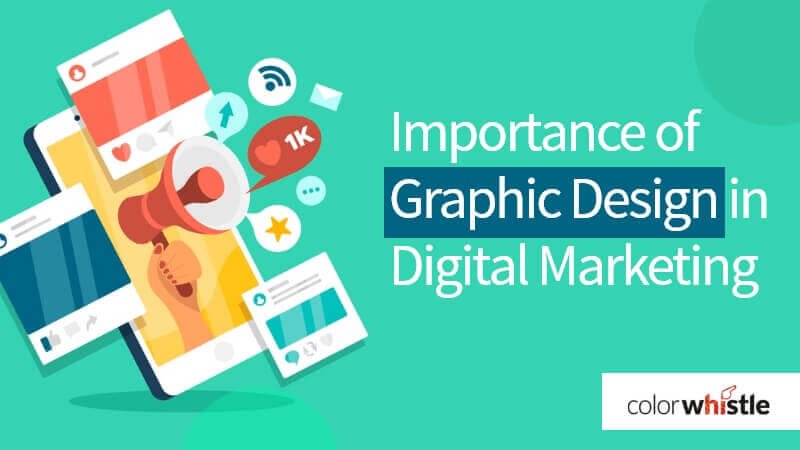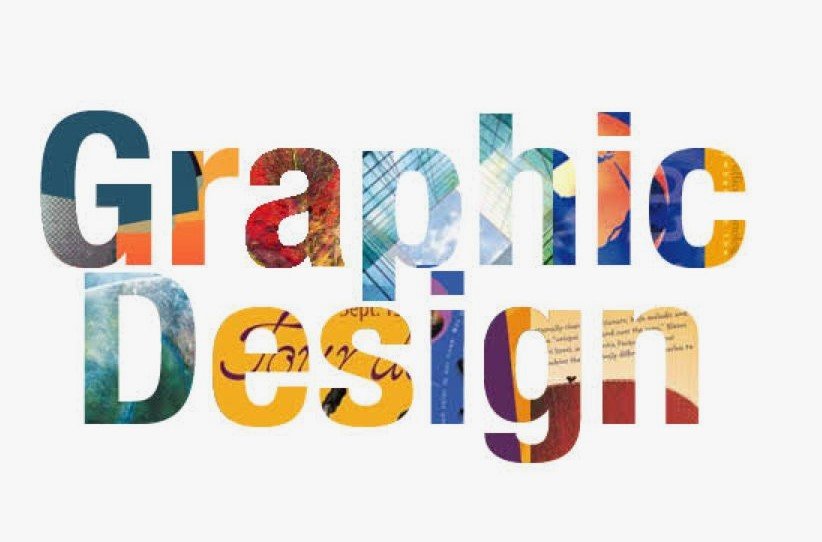Digital marketing focuses on online strategies to promote products or services, while graphic design creates visual content to communicate messages effectively. Both disciplines are crucial for enhancing brand visibility and engagement in today’s digital landscape.
Digital marketing and graphic design play vital roles in building a brand’s identity and attracting customers. Effective digital marketing combines various channels, such as social media, email, and SEO, to reach target audiences. Graphic design complements these efforts by crafting eye-catching visuals that capture attention and convey messages.
Together, they create a cohesive brand experience that resonates with consumers. Businesses leveraging both disciplines can enhance their online presence, foster customer loyalty, and drive conversions. Understanding how these fields interact can lead to more impactful marketing campaigns and a stronger brand image.
Digital Marketing Basics
Digital marketing is a way to promote products or services online. It uses various tools to reach customers. Understanding the basics helps businesses grow. Graphic design plays a vital role in making digital marketing attractive. Good designs grab attention and convey messages clearly. Let’s explore the key components and trends in digital marketing.
Key Components
To succeed in digital marketing, focus on these key components:
- Content Marketing: Create valuable content. This includes blogs, videos, and images.
- Social Media Marketing: Use platforms like Facebook and Instagram. Engage with your audience.
- Email Marketing: Send newsletters. This keeps customers informed and engaged.
- Search Engine Optimization (SEO): Optimize your website. This helps it rank higher in search results.
- Pay-Per-Click Advertising (PPC): Use ads to drive traffic. You pay only when someone clicks your ad.
These components work together to create a strong digital marketing strategy. Below is a table summarizing these components:
| Component | Description |
|---|---|
| Content Marketing | Creating valuable content to attract and engage users. |
| Social Media Marketing | Promoting products through social platforms. |
| Email Marketing | Using emails to connect with customers. |
| SEO | Improving website visibility in search engines. |
| PPC | Paying for ads that drive traffic to your site. |
Trends To Watch
Staying updated on trends is crucial. Here are some trends to watch in digital marketing:
- Video Marketing: Videos are popular. They help explain products effectively.
- Influencer Marketing: Collaborating with influencers boosts brand visibility.
- AI and Automation: Use tools for personalized marketing. They save time and improve efficiency.
- Voice Search Optimization: Many use voice assistants. Optimize content for voice queries.
- Interactive Content: Quizzes and polls engage users. They encourage participation.
These trends can enhance your marketing strategy. Keep an eye on these developments. They can provide new opportunities for growth.
Role Of Graphic Design
Digital marketing and graphic design work hand in hand. Graphic design plays a crucial role in creating a memorable online presence. It helps businesses stand out in a crowded marketplace. Good design grabs attention and communicates messages clearly. Engaging visuals can lead to higher conversion rates and brand loyalty.
Visual Identity
A strong visual identity is vital for any brand. It includes logos, colors, and typography. These elements create a unique image in the minds of consumers. Here are some key aspects of visual identity:
- Logo: The face of the brand.
- Color Palette: Sets the mood and tone.
- Typography: Reflects the brand’s personality.
- Imagery: Visuals that tell a story.
Graphic design helps unify these elements. This creates a cohesive look across all platforms.
| Element | Importance |
|---|---|
| Logo | Instant recognition. |
| Color Palette | Evokes emotions. |
| Typography | Enhances readability. |
| Imagery | Supports brand message. |
Effective visual identity makes brands memorable. It encourages consumers to choose your products over others.
Brand Consistency
Brand consistency builds trust and recognition. Using the same design elements across all channels is essential. This includes websites, social media, and advertisements. Here’s why brand consistency matters:
- Recognition: Familiarity leads to trust.
- Professionalism: A polished appearance boosts credibility.
- Customer Loyalty: Consistent experiences keep customers coming back.
Graphic design ensures that all visual elements align. This helps maintain a unified brand image. Below is a checklist for achieving brand consistency:
- Use the same logo everywhere.
- Stick to your color palette.
- Choose fonts that match your brand.
- Keep imagery consistent in style.
Strong brand consistency leads to long-term success. It creates a lasting impression in the minds of consumers.
Social Media Strategies
Digital marketing and graphic design go hand in hand. They create a powerful tool for businesses. Social media strategies help brands connect with their audience. Effective strategies increase visibility and engagement. This section explores key components that drive successful social media efforts.
Content Creation
Creating captivating content is essential for social media success. Great content attracts attention and keeps users engaged. Here are some effective types of content:
- Images: High-quality visuals grab attention.
- Videos: Short, engaging videos can convey messages quickly.
- Infographics: These present complex information in a simple way.
- Blogs: Share valuable information that resonates with your audience.
Using a content calendar helps plan posts ahead. This ensures consistency and variety. Below is a sample content calendar:
| Day | Post Type | Topic |
|---|---|---|
| Monday | Image | Product Showcase |
| Wednesday | Video | How-To Guide |
| Friday | Blog | Industry Trends |
Focus on quality over quantity. Engaging content encourages shares and comments. This builds a loyal community around your brand.
Engagement Tactics
Engagement tactics enhance interaction with your audience. These strategies create a two-way conversation. Here are some effective tactics:
- Ask Questions: Encourage followers to share their thoughts.
- Polls: Use quick polls to gather opinions.
- Contests: Run fun contests to boost participation.
- User-Generated Content: Share content created by your fans.
Timely responses to comments show you value your audience. Use these tips for better engagement:
- Be Authentic: Show your brand’s personality.
- Share Stories: Connect with users on an emotional level.
- Use Hashtags: Increase visibility with relevant hashtags.
Engagement builds trust and loyalty. A strong community supports your brand. Focus on creating meaningful interactions for lasting success.
Seo And Graphic Design
Digital marketing thrives on effective visuals. Graphic design plays a vital role in this space. SEO and graphic design work together to enhance visibility. Great design attracts users and keeps them engaged. Proper SEO techniques make sure your designs reach the right audience.
Image Optimization
Image optimization is key for better SEO. It helps your website load faster. Users love quick-loading sites. Search engines favor them too. Here are some important tips for image optimization:
- File Names: Use descriptive names. Avoid generic names like “image1.jpg.”
- Alt Text: Include keywords in alt text. This helps search engines understand your images.
- File Size: Compress images to reduce file size. This improves loading speed.
- Formats: Use the right formats. JPEG is great for photos, while PNG works well for graphics.
Consider this table to understand different image formats:
| Format | Best For | Pros | Cons |
|---|---|---|---|
| JPEG | Photos | Small file size | Loss of quality |
| PNG | Graphics | No loss of quality | Larger file size |
| GIF | Animations | Supports animation | Limited colors |
Optimize your images. This will boost your SEO rankings. More visibility means more visitors to your site.
Responsive Design
Responsive design ensures your site looks good on all devices. Many users browse on phones and tablets. A responsive site adapts to different screen sizes. This improves user experience and helps with SEO.
Here are key elements of responsive design:
- Fluid Grids: Use percentage-based widths. This makes elements resize easily.
- Flexible Images: Images should scale within their containers. This avoids overflow issues.
- Media Queries: Apply different styles based on device characteristics. This customizes the user experience.
Check this checklist to ensure your design is responsive:
- Test on multiple devices.
- Check loading times.
- Ensure all links and buttons are clickable.
- Verify readability across all screens.
Responsive design is crucial for SEO. Search engines favor sites that work well on all devices. Keep your audience engaged with great design.
Email Marketing Essentials
Email marketing is a powerful tool in digital marketing and graphic design. It allows businesses to connect directly with their audience. A well-designed email can grab attention and drive engagement. Understanding email marketing essentials is crucial for success. This includes creating eye-catching newsletters and effective call-to-action techniques.
Designing Newsletters
Designing newsletters is key to effective email marketing. A strong newsletter captures interest and encourages readers to engage. Here are some important elements to consider:
- Visual Appeal: Use bright colors and appealing images.
- Brand Consistency: Stick to your brand colors and fonts.
- Clear Layout: Organize content into sections for easy reading.
Follow these tips for a successful newsletter design:
- Choose a catchy subject line.
- Include a brief introduction.
- Use headlines to break up text.
- Add relevant images to support your message.
- Keep text short and to the point.
Here’s a simple table to illustrate newsletter sections:
| Section | Description |
|---|---|
| Header | Company logo and newsletter title. |
| Body | Main content with articles and updates. |
| Footer | Contact info and unsubscribe link. |
Remember, a well-designed newsletter can boost open rates. Make it fun and engaging!
Call-to-action Techniques
A strong call-to-action (CTA) can increase clicks and conversions. It tells readers what to do next. Here are effective CTA techniques:
- Be Direct: Use clear and simple language.
- Create Urgency: Add phrases like “Limited time offer” or “Act now!”
- Use Buttons: Make your CTA stand out with buttons instead of links.
Follow these steps to create great CTAs:
- Identify the goal of your email.
- Place the CTA prominently in the newsletter.
- Test different phrases to see what works best.
- Make sure the CTA is easy to click on mobile devices.
Here’s an example of effective CTAs:
| CTA Text | Purpose |
|---|---|
| Subscribe Now | Encourage newsletter sign-ups. |
| Shop Now | Direct to product page. |
| Learn More | Link to detailed content. |
Effective CTAs can turn readers into customers. Use them wisely!

Analytics And Performance
Digital marketing and graphic design work together to create powerful campaigns. Analytics and performance help businesses understand what works. They track how effective their designs and strategies are. This information helps improve future efforts and reach more people.
Tracking Metrics
Tracking metrics is essential in digital marketing. It shows how well your campaigns perform. You can measure various aspects, such as:
- Website Traffic: How many visitors come to your site?
- Engagement Rate: How do users interact with your content?
- Conversion Rate: How many visitors take action, like signing up or purchasing?
Using tools like Google Analytics helps you track these metrics easily. You can see which pages are popular and which are not. This information allows you to:
- Adjust your graphic design to improve user experience.
- Target specific audiences based on their behavior.
- Optimize your marketing strategies for better results.
Here’s a simple table showing key metrics:
| Metric | Importance |
|---|---|
| Website Traffic | Measures overall visibility |
| Engagement Rate | Indicates content quality |
| Conversion Rate | Shows effectiveness of campaigns |
Tracking these metrics helps refine your approach. Better insights lead to improved designs and strategies.
A/b Testing
A/B testing is a powerful tool in digital marketing. It allows you to compare two versions of a design or ad. You create two options, A and B, and show them to different audiences. This helps you find out which one performs better.
Key benefits of A/B testing include:
- Data-Driven Decisions: Make choices based on real performance.
- Improved Engagement: Find designs that capture attention.
- Higher Conversion Rates: Optimize for actions that matter.
Follow these steps for effective A/B testing:
- Choose what to test, like headlines or images.
- Create two versions: A and B.
- Run the test with similar audiences.
- Analyze the results after a set period.
For example, consider testing two different button colors:
| Button Color | Conversion Rate (%) |
|---|---|
| Red | 5% |
| Green | 8% |
A/B testing reveals which design drives more conversions. This insight allows you to create better marketing strategies.
Emerging Technologies
Digital marketing and graphic design are evolving rapidly. Emerging technologies play a crucial role in this evolution. They enhance creativity, improve efficiency, and create engaging experiences. Businesses must adapt to these changes to stay relevant. This blog post explores two key technologies: AI in design and Augmented Reality.
Ai In Design
Artificial Intelligence (AI) is transforming graphic design. It helps designers create stunning visuals faster. AI tools can analyze trends and suggest color palettes. They can also generate layouts based on user preferences. This technology saves time and boosts creativity.
Here are some benefits of AI in design:
- Speed: Design projects are completed quicker.
- Consistency: AI ensures uniformity across designs.
- Customization: AI personalizes designs for different audiences.
Check out this table comparing traditional design methods with AI-enhanced design:
| Aspect | Traditional Design | AI-Enhanced Design |
|---|---|---|
| Time Taken | Longer | Shorter |
| Creativity | Designer-Driven | AI-Driven Suggestions |
| Feedback Incorporation | Manual | Automated |
AI tools like Adobe Sensei and Canva’s Magic Resize are popular. They simplify tasks and allow designers to focus on creative ideas. As AI continues to grow, it will shape the future of graphic design.
Augmented Reality
Augmented Reality (AR) blends the digital world with reality. It adds digital elements to real-life environments. AR enhances user engagement, making marketing campaigns more interactive. It allows customers to visualize products in their own space.
Benefits of using AR in digital marketing include:
- Engagement: Users interact with the content.
- Experience: Customers see products in real-time.
- Informed Decisions: AR helps customers make better choices.
Popular AR applications include:
- IKEA Place: Visualize furniture in your home.
- Snapchat Filters: Fun, interactive user experiences.
- Pokemon GO: Engage users through gaming and exploration.
AR offers unique marketing opportunities. It creates memorable experiences that connect brands with their audience. As technology advances, AR will become more accessible and impactful.

Future Trends
Digital marketing and graphic design are evolving rapidly. New trends shape how brands connect with customers. The future is bright with exciting changes, especially in personalization and sustainability.
Personalization
Personalization is the key to effective digital marketing. It creates a unique experience for each user. Customers prefer content that speaks to them. Tailored experiences increase engagement and loyalty. Here are some ways personalization impacts digital marketing:
- Customized emails based on user behavior
- Personalized product recommendations
- Targeted social media ads
Graphic design plays a crucial role in personalization. Designers create visuals that resonate with specific audiences. Tools like AI analyze user data. This helps designers craft tailored experiences. The table below highlights popular personalization strategies:
| Strategy | Description |
|---|---|
| Dynamic Content | Content that changes based on user data. |
| Segmentation | Dividing audiences into specific groups. |
| Behavior Tracking | Monitoring user actions for better targeting. |
Personalized experiences lead to higher conversion rates. Companies that focus on this trend will thrive.
Sustainability In Design
Sustainability is becoming essential in graphic design and marketing. Consumers care about the environment. Brands that show commitment to sustainability attract loyal customers. Designers now consider eco-friendly materials and practices.
- Using recycled paper for print materials
- Reducing energy consumption in digital processes
- Opting for sustainable packaging solutions
Green design not only helps the planet. It also enhances brand image. Companies that prioritize sustainability gain a competitive edge. Here’s a quick overview of sustainable design practices:
| Practice | Benefit |
|---|---|
| Eco-Friendly Materials | Reduces waste and pollution. |
| Minimalist Design | Simplifies production and reduces resources. |
| Digital First Approach | Decreases the need for physical products. |
Sustainability is not just a trend. It’s a movement that defines the future of graphic design and marketing.
Conclusion
Digital marketing and graphic design go hand in hand. Effective strategies leverage both elements to create a cohesive brand identity. Strong visuals enhance engagement and drive conversions. As businesses evolve, integrating these disciplines becomes essential. Embracing this synergy will elevate your brand and connect with your audience more meaningfully.



